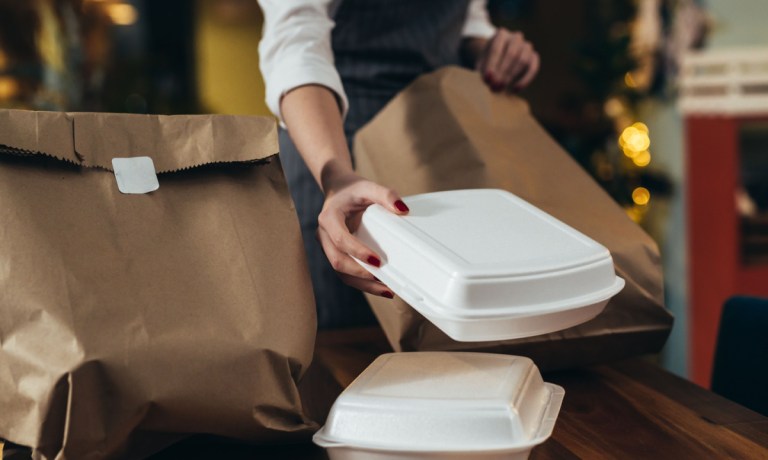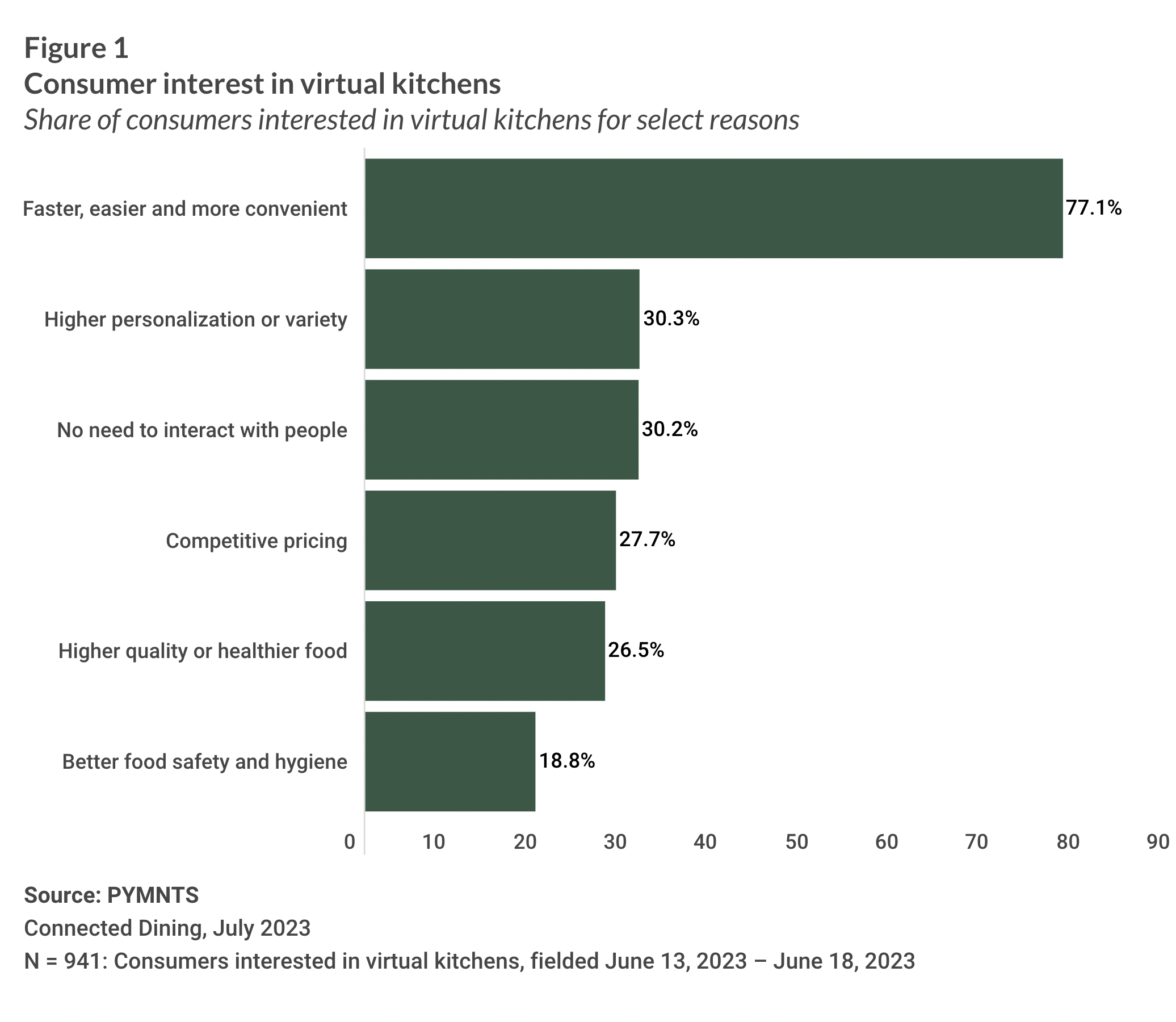Ghost Kitchen Customers Have a Need for Speed

Defenders of the ghost kitchen model overwhelmingly tout one key benefit — the speed that these virtual brands can offer.
By the Numbers
For PYMNTS’ new exclusive study, “Connected Dining: The Robot Will Take Your Order Now,” we surveyed a census-balanced survey of nearly 2,000 U.S. consumers last month to gauge their opinions about different restaurant technologies and to understand the factors driving these sentiments.

The data reveal that, of the 48% of restaurant customers interested in ghost kitchens, the vast majority of them are driven by speed and convenience. Specifically, 77% of those interested in virtual kitchens said that this positive sentiment comes, at least in part, because they believe the technology makes the ordering experience faster, easier and more convenient.
The Data in Context
Indeed, virtual brand offshoots are enabling some restaurants to reach entirely new customer bases.
Take, for instance, Hooters. In the fall, Marc Butler, then senior vice president of strategic planning/off-premises at Hooters of America, told PYMNTS that the chain’s delivery-only brands, which have been around since before the pandemic, have consistently drawn new customers into the restaurant’s ecosystem.
“The data that we got says about 75% of the people that are ordering from the virtuals have never ordered from the core Hooters brand, and that number shocked me from the very beginning,” Butler said. “I was really expecting a little bit more overlap. But it seems that still, even to this day, three, four years later, we’re still attracting a new customer with it.”
Ghost kitchens can also enable restaurants to drive sales at off-peak hours with targeted menu items.
“We’ve really wanted to help these restaurants to maximize their underutilized kitchens, because every restaurant has these opportunities to sell more food if they had that demand to do so,” Nextbite CEO Alex Canter told PYMNTS’ Karen Webster in an interview.